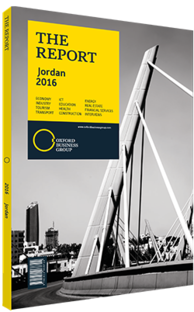Khaled Asfour, Managing Partner, Zu’bi Advocates & Legal Consultants, on the Public-Private Partnership Law: Viewpoint

The development of sectors such as transport and energy is dependent on the use of modern technology, which is found mainly in the private sector. This is also dependent on the availability of guaranteed and continuous financing, which the public sector alone cannot sustain.
Therefore, public-private partnerships (PPPs) are indeed essential to the economic growth of Jordan. Jordan has achieved an important milestone through the enactment of the Public-Private Partnership Law No. 31 of 2014 and its implementing regulations. The PPP Law aims at standardising PPP procurement procedures to ensure greater transparency, fairness and equal opportunity in the PPP procurement procedures.
However, the PPP Law is not without flaws. There are several weaknesses and drawbacks in the PPP Law manifested mainly in ambiguities over its constitutionality and the exact scope of its application vis-à-vis sectorial and municipal legislation. The constitution stipulates that “any privilege given to grant any right relating to an investment in mining, minerals and public facilities must be ratified by a law”. Therefore, PPPs in the mining, minerals and public facilities sectors must be ratified by “a law”. It is presently unclear whether the PPP Law satisfies this requirement under the constitution, acting as a catch-all legislation for all future PPPs in Jordan, or whether a new law will need to be enacted for each independent PPP project.
Given these interpretative risks and the substantial impact they have on the legitimacy of PPP projects in Jordan, it is imperative that the government of Jordan obtain a decision from the Constitutional Courts as to the interpretation of the constitution in these circumstances.
With respect to its scope of application, the PPP Law does not clearly indicate whether it applies to all sectors in Jordan (effectively overriding certain provisions in sectorial legislation) or whether certain sectors are excluded from its application. Prior to the enactment of the PPP Law, certain public authorities referred to their own sectorial laws when undertaking PPP projects.
For example, Article 28 of the Water Authority Law No. 18 of 1998 grants the Council of Ministers, based on the recommendation of the minister of water and irrigation, the authority to assign any of the functions or projects of the Water Authority of Jordan to any private or public entity. The procedure for such an assignment is not set out in the Water Authority Law and is, therefore, left to the Council of Ministers to determine. The PPP Law did not address this gap in legislation and, therefore, the application of sectorial laws (such as the Water Authority Law) and the PPP Law remains unclear.
While certain sector-specific idiosyncrasies should remain (for example the procedure for obtaining certain licences and approvals from the relevant regulator in a sector), it is necessary that the PPP Law clearly define the scope of its application over sectorial legislation by expressly repealing or overriding specific provisions under existing sectorial legislation. This effectively eliminates legislative contradictions and ambiguities and creates a unified piece of legislation (the PPP Law) to govern all PPP projects in Jordan.
Notwithstanding the foregoing, and in an effort to safeguard municipality independence, PPP projects with municipalities should be excluded from the application of the PPP Law.
Furthermore, in order to ensure greater standardisation, fairness and transparency in all PPP projects with municipalities, the procedure for PPP procurement by municipalities should be set out in a regulation issued pursuant to the Jordanian Municipalities Law currently in effect and should mirror the procedures set in the PPP Law.
You have reached the limit of premium articles you can view for free.
Choose from the options below to purchase print or digital editions of our Reports. You can also purchase a website subscription giving you unlimited access to all of our Reports online for 12 months.
If you have already purchased this Report or have a website subscription, please login to continue.

